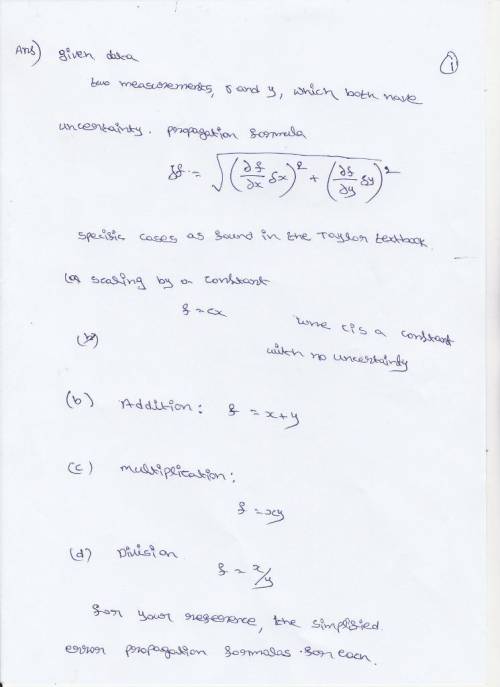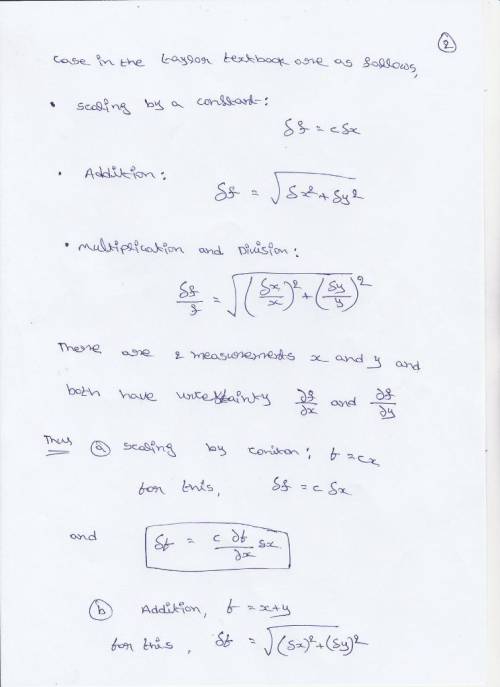
Mathematics, 14.04.2020 21:05 ayindejoy
Given two measurements, x and y, which both have uncertainty. Use the general error propagation formula, δf = vuut ∂f ∂xδx!2 + ∂f ∂y δy!2 to derive the error propagation formulas, i. e. the expression for δf, for the following specific cases as found in the Taylor textbook. (a) Scaling by a constant: f = Cx where C is a constant with no uncertainty. (b) Addition: f = x + y (c) Multiplication: f = xy (d) Division: f = x y

Answers: 1


Another question on Mathematics

Mathematics, 22.06.2019 04:00
Xf(x) = 2x + 5 1 7 2 9 3 11 4 13 5 15 6 17 linear functions grow by equal differences over equal intervals. in the table above, what column could be added to prove this relationship?
Answers: 1

Mathematics, 22.06.2019 04:30
Acertain company's main source of income is a mobile app. the company's annual profit (in millions of dollars) as a function of the app's price (in dollars) is modeled by p(x)=-2(x-3)(x-11)p(x)=−2(x−3)(x−11) which app prices will result in \$0$0 annual profit? enter the lower price first.
Answers: 2

Mathematics, 22.06.2019 07:30
Which measurements are in the correct order from largest to smallest? a. quart, pint, cup, fluid ounce b. gallon, quart, cup, pint c. gallon, pint, quart, cup d. gallon, cup, fluid ounce, quart
Answers: 2

Mathematics, 22.06.2019 08:00
Correct answer only ! which graph represents g(x) = (x − 3)^2 - 5?
Answers: 1
You know the right answer?
Given two measurements, x and y, which both have uncertainty. Use the general error propagation form...
Questions


Spanish, 25.05.2021 02:00

Mathematics, 25.05.2021 02:00


Mathematics, 25.05.2021 02:10


Mathematics, 25.05.2021 02:10

History, 25.05.2021 02:10

English, 25.05.2021 02:10




Mathematics, 25.05.2021 02:10


Social Studies, 25.05.2021 02:10

Chemistry, 25.05.2021 02:10



Mathematics, 25.05.2021 02:10

Social Studies, 25.05.2021 02:10






